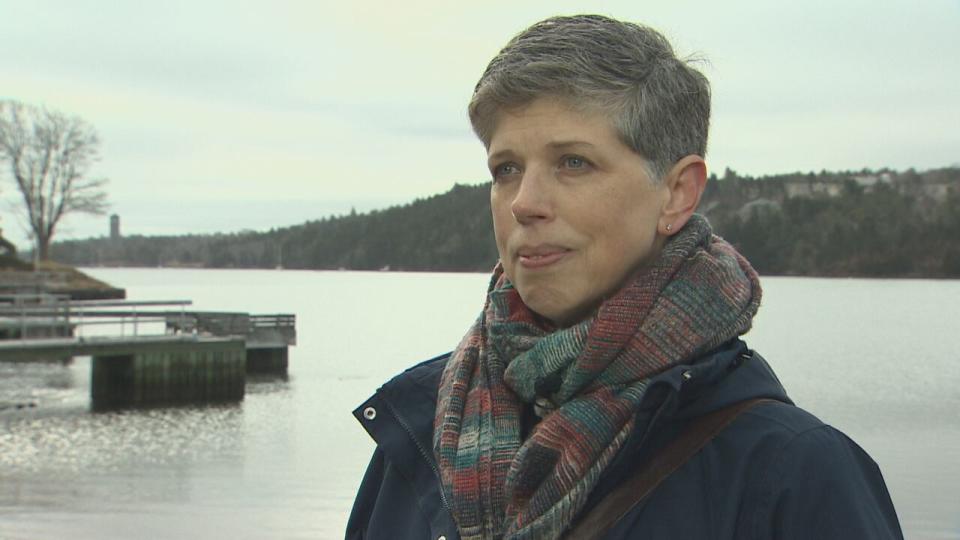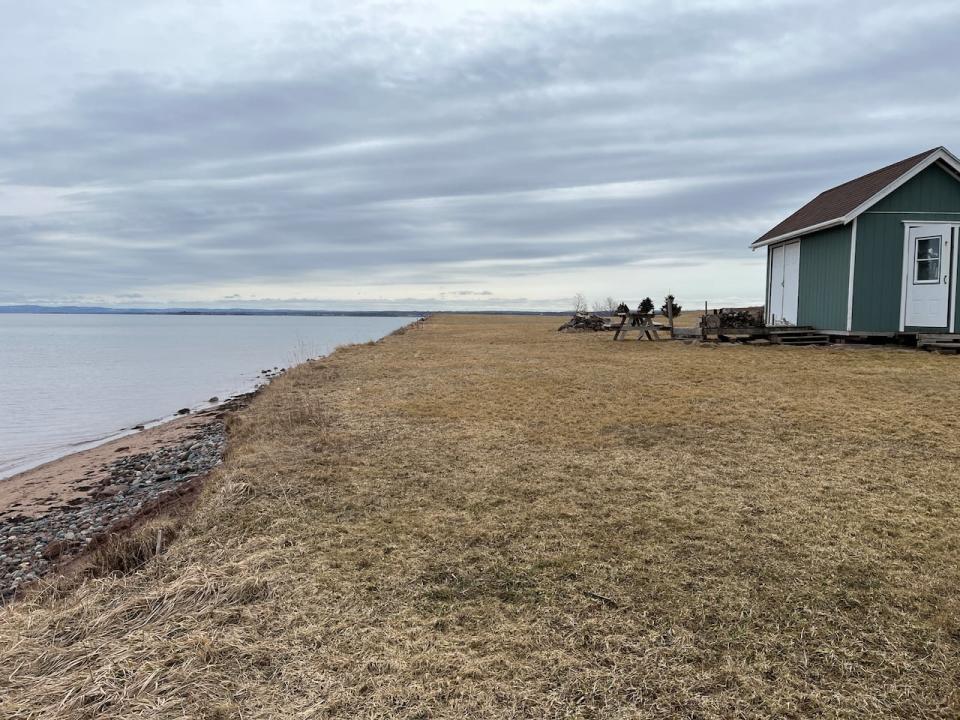Property owners, researcher critical of N.S. approach to coastal protection

Susan Morrison has watched dynamic changes to the coastline near her property in Cherry Hill, N.S., during the almost 30 years she's lived in the south shore community.
She recalls grass-filled sand dunes all the way down the beach when she first moved to the area, and a tree about 100 feet back into the dunes. That grass is long gone and the tree is now dead on the beach, Morrison said in a recent interview.
"And it's not because it got washed away; the sand kept disappearing, disappearing, and you know the water reclaimed the tree. So that's a lot of erosion."
It's this perspective that made Morrison feel it's important for the provincial government to bring the Coastal Protection Act into law. And she would have shared her views during last fall's survey aimed at coastal property owners, except Morrison was not one of the 40,000 coastal property owners contacted about the consultation.
When Environment Minister Tim Halman recently announced his government would not proclaim the act, which passed with all-party support in 2019, and that he assumed the almost 39,000 people who did not respond to the survey opposed making the act law, Morrison was not impressed.
"I thought it was pretty arrogant and presumptive that he would know what people are thinking."
The province contracted Group ATN to do the consultation work and prepare a report, with a budget of about $100,000.
An Environment Department spokesperson told CBC that information postcards were sent through Canada Post to all coastal property owners in the province. The land registry database was used to get addresses for people with premises on the coast. The province budgeted an additional $45,000 to produce the cards, advertise the consultation and translate the survey and website.
Jeff Kidlark's land in Braeshore, overlooking the mouth of Pictou Harbour, fits the description of a coastal property, but he didn't get one of the cards. Kidlark, who lives in a house up the road from the land, said 10 out of 12 neighbours he checked with didn't get the cards, either.
"I'm questioning where that money all went to for that survey," he said in a recent interview.
"It's kind of a concern that we're paying public money and not getting accurate surveys done."

Kate Sherren is a professor in Dalhousie University's school for resource and environmental studies. (CBC)
Halman has yet to release the final budget or report for the most recent round of consultation — the third — on the legislation. He has said 1,070 people responded to the survey with the majority supporting legislation that would have laid out rules for how and where people could develop along the coastline in order to protect structures from the effects of climate change, including sea level rise and coastal flooding and erosion.
Although Halman said he was disappointed by the response rate, Kate Sherren said it actually produced solid data for the minister.
Sherren, a professor in Dalhousie University's school for resource and environmental studies, said decisions can be made based on the sample size because of the confidence interval it produced.
"The idea that then you would discard what is pretty good data for the benefit of those that didn't answer the survey is just simply not best practice," she said.
Halman's assumption that he knows what everyone who did not respond to the survey thinks and that they would all think the same thing is "100 per cent spin," she said.
"There's no other explanation for it."
Heart decisions vs. head decisions
The 15-point plan the government released in lieu of proclaiming the act, which includes providing property owners with guidance to help them make informed development decisions and allowing municipalities to make their own zoning bylaws fir coastal development, represents "a massive step backwards for no clear reason," said Sherren.
While the government works to complete flood risk maps for the province, it has released a tool that projects where water levels along the coast will be in 75 years. Sherren said that could give people a false sense of security because it's not detailed enough and does not consider enough factors that contribute to flood risk.
Her own research has shown that people support flood risk mapping, until it could have a potential impact on real estate values and then some people are less interested in the information. That's why it's important for the province to take the lead, she said, because it could prevent people from making "heart decisions" versus "head decisions."
As a coastal property owner, Kidlark said he saw the need for the Coastal Protection Act to become law. Still, he had concerns about some of the proposed regulations.

A view of the edge of Jeff Kidlark's property in Braeshore, N.S. Kidlark had concerns about some of the proposed regulations for the Coastal Protection Act, but he still thinks the act needs to be made law. His shed is on skids so it can be moved backwards as necessary. (MIchael Gorman/CBC)
He has enough frontage that even if setbacks from the highwater mark were established at 100 metres, as the proposed regulations contemplated, there is lots of room to build a house. Even so, Kidlark favours some form of compensation for property owners who would essentially be losing the ability to develop part of their land.
If coastal protection is the responsibility of everyone, as the government has said, Kidlark thinks the burden should not fall disproportionately to property owners.
"That's not right because it should be the whole province that kicks in to look after the land."
But Kidlark has also seen how the coast along his property has changed.
His bluff is eroding, an issue that has as much to do with water runoff and soil composition as it does storms that have battered the shoreline.
Neighbouring properties on either side of him have tried to combat erosion with rocks and armour stone. What was once a clear walk along the shoreline at the bottom of his bluff to a provincial park about a kilometre away now requires climbing rocks and trespassing to cover the distance, he said.
Although Kidlark believes the proposed regulations needed more work, he said the government should not have abandoned the act.
"I wouldn't have liked it, but I could have lived with it."
MORE TOP STORIES


